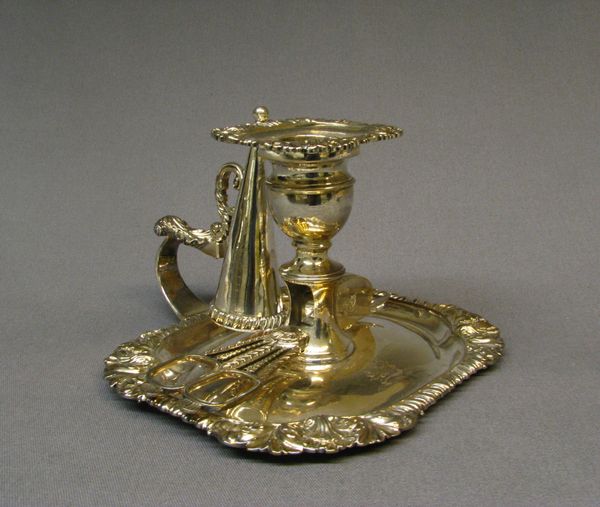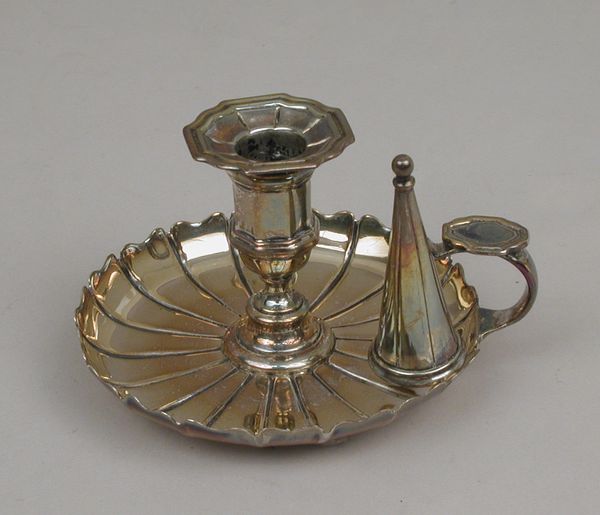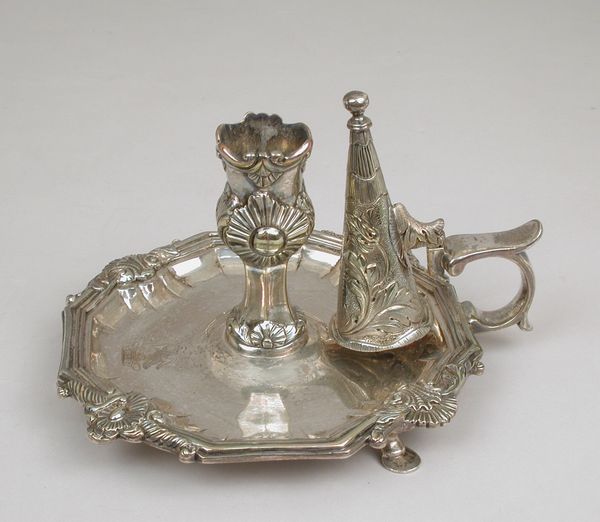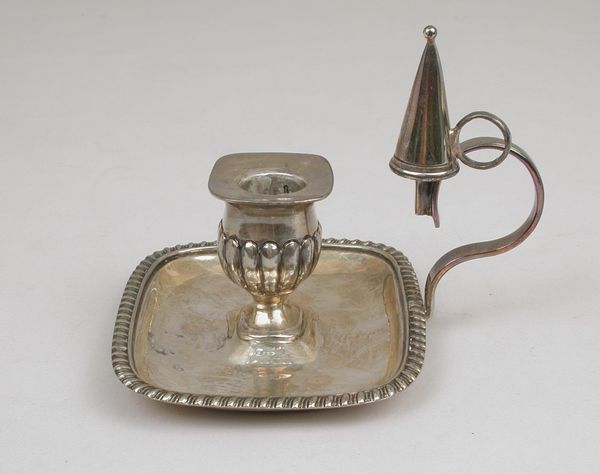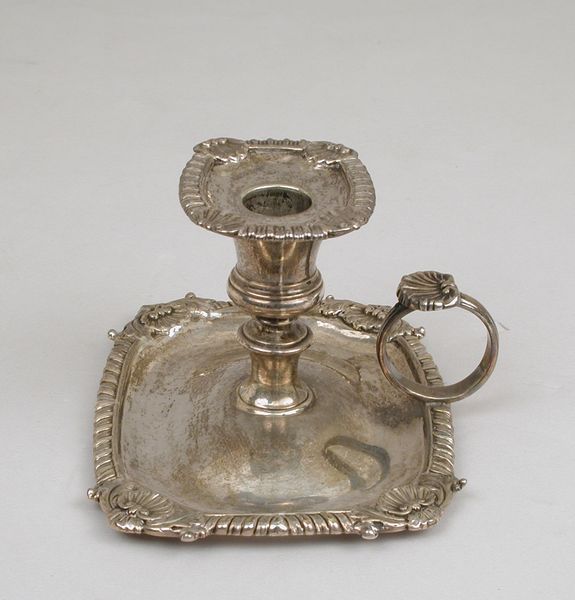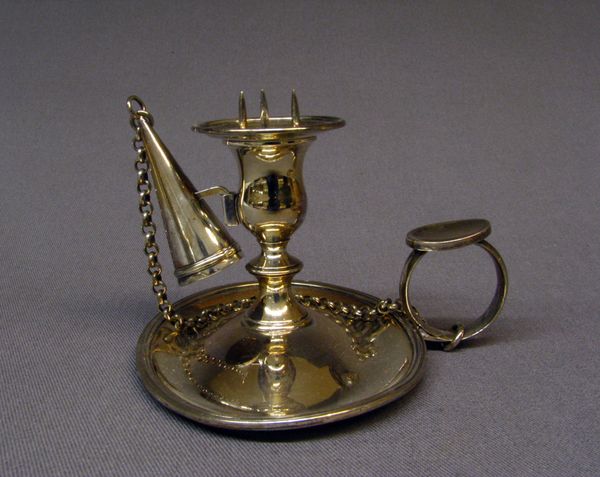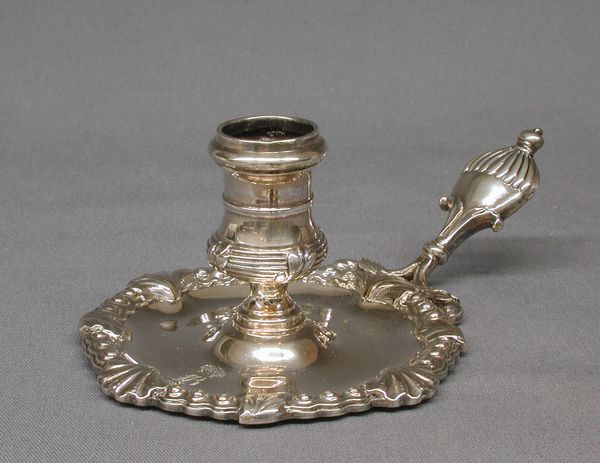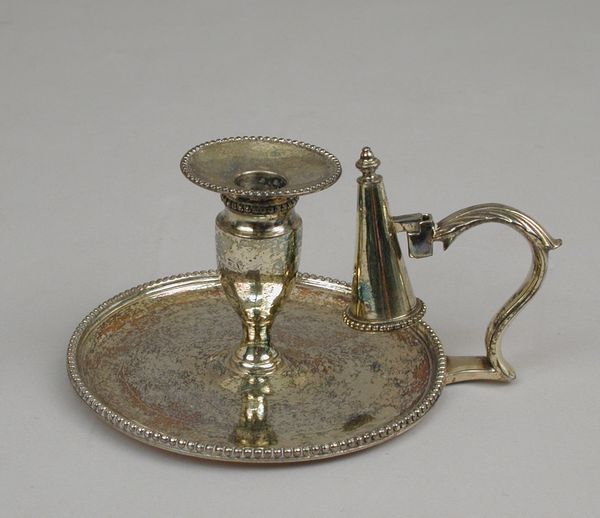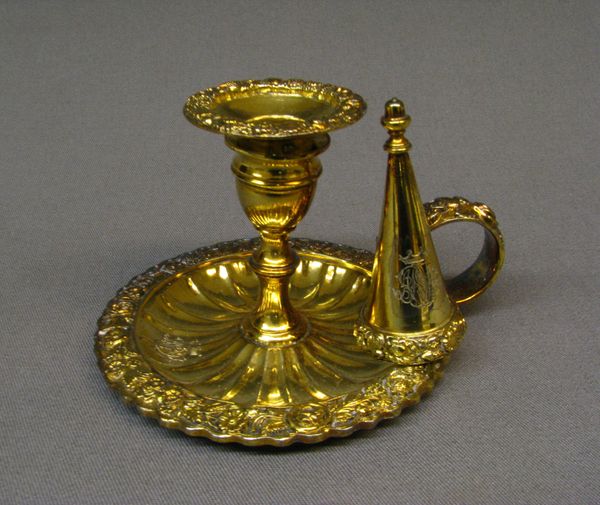
Dimensions: Overall: 2 1/2 × 3 1/2 in. (6.4 × 8.9 cm)
Copyright: Public Domain
Editor: This is a Chamber candlestick, or taperstick, made in 1811 or 1812 by Rebecca Emes. It's crafted from silver and housed here at the Metropolitan Museum of Art. The baroque style stands out to me; it’s so ornate for something so functional. What stands out to you in this piece? Curator: The eye is immediately drawn to the interplay of geometric forms. Observe the square base juxtaposed with the circular elements: the drip pan, the extinguisher cone, and the cylindrical socket for the candle itself. How do these contrasting shapes inform the overall structure? Editor: Well, I guess the square base provides a stable foundation, while the circles add a sense of fluidity. It's almost like a conversation between order and movement. Curator: Precisely. Notice also the verticality of the candlestick's stem in relation to the horizontal plane of the base. This interplay creates a dynamic tension, a visual counterpoint that animates the piece. And have you considered the texture? Editor: I see a lot of detailing around the edges of the base. It's like they were really trying to fill up every bit of the space. Curator: Indeed. This reflects the Baroque sensibility. It embraced complexity and richness. The interplay between the polished, smooth surfaces and the textured, ornamental details creates visual interest, don't you agree? Editor: Definitely! I see how focusing on the composition, and those basic shapes, and the silver's materiality helps us understand the piece better. Thanks. Curator: My pleasure. By analyzing these formal qualities, we can move beyond mere appreciation of its aesthetic beauty.
Comments
No comments
Be the first to comment and join the conversation on the ultimate creative platform.
